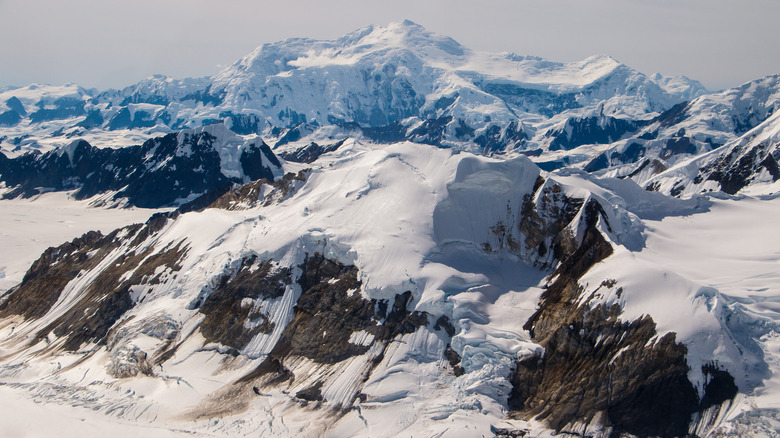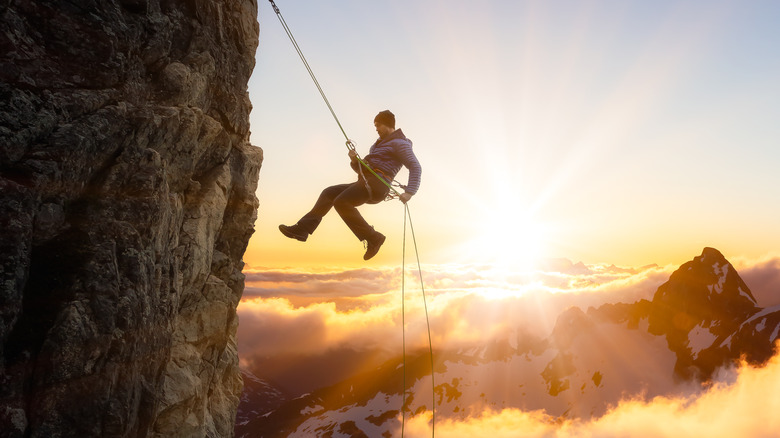This Massive Canadian Mountain Is Still Growing Every Day
The Seven Second Summits is a collective term that denotes the second highest peaks on each of the seven continents across the world, as Peak Bagger reports. Most of you reading this probably live on the North American continent, so you're likely wondering which one of our many majestic sedimentary monuments belongs to this venerable order. According to Explorer's Web, that honorary title belongs to Mt. Logan in Canada's Yukon territory. Towering above the soil and gravel at a staggering 5,959m (just under 20,000ft.), it's also Canada's tallest mountain and the world's largest non-volcanic mountain in base circumference. It is second in height only to Mt. Denali, whose zenith reaches some 6,194m (20,321ft) above the earth.
Mountain Guides reports that Mt. Logan was named after Sir William Edmond Logan (1798-1875) who founded the Geological Survey of Canada in 1842. Today, it's a magnet of adventure for climbers, skiers, and anyone with a vivacious enough drive to defy Mother Nature's unforgiving and harrowing elemental forces. Mt. Logan offers sportsmen an ample challenge, and it will continue to do so for years to come at an increasing rate. As Explorer's Web reports, one of Mt. Logan's most distinctive features is its inherent tendency to grow larger and taller every year.
Mt. Logan grows taller every year
While it's true that Mt. Logan has yet to stop growing, it's by no means shooting skyward at breakneck speeds. The mountain's gradual ascent deeper and deeper into the clouds is happening at a very reduced rate: about 0.35mm per year, as Explorer's Web reports. You can thank tectonic uplift for the phenomenon. All the same, it's pretty wild to consider the fact that such an impressively large monument has yet to stop growing in mass and height. The phenomenon grants the mountain a sort of sentience and stands as a reminder that we are not the only entities on this planet with inherent ambition.
Naturally, Mt. Logan has presented an exhilarating challenge to those brave enough to take on its summit, and like most all other mountains that draw climbers from across the world, a tragic death toll accompanies its grandiose allure (via Explorer's Web).
Ain't no mountain high enough
While Mt. Logan certainly isn't as deadly to competitive climbers as Switzerland's Eiger (no less than 64 unfortunate souls have perished trying to scale its mighty peak, as Beautiful World reports), it's still not a task you should expect to execute without risk. According to The Globe and Mail, 11 people have died trying to climb Mt. Logan since 1978 and 12 more have been injured. Before then, it was still reputed as a potentially fatal landmark to ambitious sportsmen. The first journey up its slopes took place in 1925, and while no lives were lost, the party of six that took on the endeavor combated severe hunger, ravenous frostbite, and hallucinations throughout their passage (per Explorer's Web).
If you're looking to take on Mt. Logan's ever-growing summit, you should plan to do so during the summer months and in a group. According to Explorer's Web, solo climbing is not permitted, and adventurers are only allowed to breach its faces between May and August each year in order to scope our rescue mission routes, should disaster ever strike.


